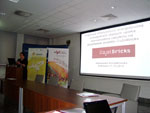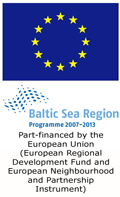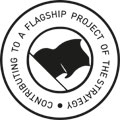11.12.2012 | Katowice | Poland
Co2olBricks' cooperation with SERPENTE project in Poland
Co2olBricks is not the only interregional project dealing with energy efficiency. Similar activities, but focused on improving the energy efficiency of public service buildings, are carried out within the SERPENTE project, co-financed by INTERREG IVC programme.
The theme of the project is Surpassing Energy Targets through Efficient Public Buildings. Overall objective is to improve energy efficiency in different typologies of publicly owned or managed buildings through improved public policies. In this way SERPENTE contributes to the objectives of Lisbon, Gothenburg and Europe 2020 Strategy for smart, sustainable and inclusive growth. To the project joined 10 international partners from countries such as Italy (Florentine Energy Agency), Czech Republic (Energy Agency of Vysocina) or Sweden represented by the City of Malmo, which is also project partner of Co2olBricks.
Polish partner of the SERPENTE project is the Metropolitan Association of Upper Silesia, which representing over a dozen cities from Silesia Voivodeship. This organization, on 11 December 2012 in Katowice, arranged local partners meeting, on which invited the Polish project partner of Co2olBricks - European Foundation for Monuments Protection. As the SERPENTE is a project with shorter time and less experience, European Foundation for Monuments Protection' task was to present the good practices and experiences which have been develop in Co2olBricks.
As representatives of the Foundation have noted, many public buildings in Poland are classified as monuments. Co2olBricks experience in Poland shows that the two approaches are confronted: whether to protect the monument for future generations while keeping it in its original form as possible, or to adapt old buildings to energy efficiency? If so, how to reduce energy consumption in buildings without destroying their historic value? EFOZ also presented one of the solutions, which is sometimes used for warming in historic buildings: an internal, low-temperature wall heating system, conceptually similar to the underfloor heating.
Presentation on Co2olBricks has been very enthusiastically received. As representatives of the SERPENTE said, cooperation between the projects is necessary in order to exchange information and improve performance. The meeting in Katowice was the first major step in this direction.
More information on SERPENTE project web-page: www.serpente-project.eu

- (source: EFOZ)





